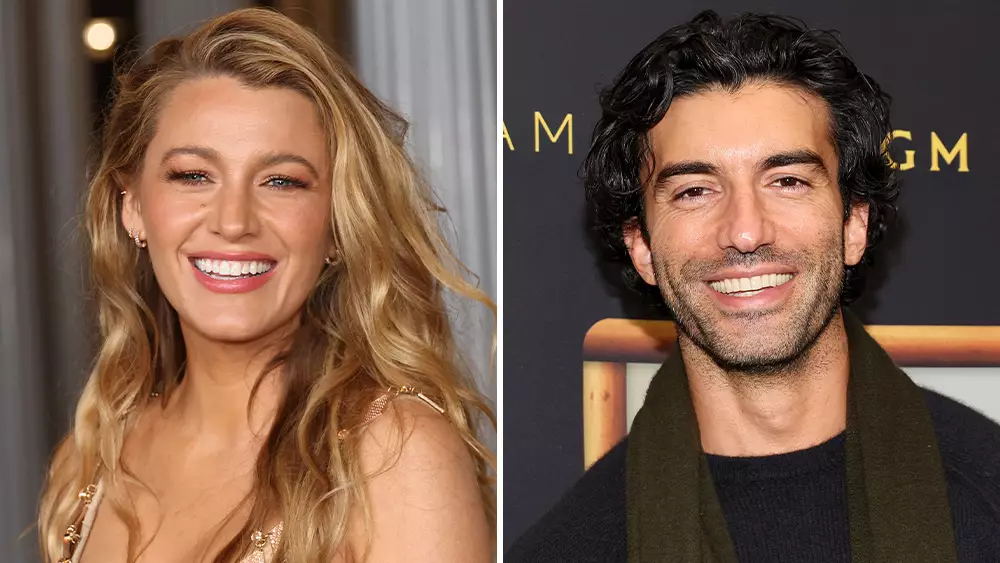In an industry peppered with glamour and high stakes, the world of Hollywood is no stranger to conflict. Yet, the unfolding legal drama involving Blake Lively and Justin Baldoni transcends typical entertainment industry squabbles. Over the Christmas holidays, Lively’s legal action against her co-star and director became significant fodder for media analysis and public speculation. The tension reached a boiling point when Lively escalated her complaint, previously filed with California’s Civil Rights Department, into a more aggressive federal lawsuit in New York. The intricacies of the allegations not only portend severe repercussions for those involved but also illuminate broader concerns regarding workplace safety and empowerment within the industry.
Lively’s lawsuit is grounded in multiple facets, with allegations including sexual harassment and retaliation stemming from her experiences during the production of the film “It Ends With Us.” The complaint outlines a series of purported attacks on Lively orchestrated by Baldoni and his team, depicting these actions not merely as harmful but as part of a premeditated scheme aimed at silencing her and others brave enough to address the alleged toxic atmosphere created by Baldoni and his associates. The lawsuit paints a vivid picture of a hostile environment that not only impacted Lively but also reverberated through the cast and crew, raising questions about the broader implications of such workplace cultures.
The legal document, comprising 13 distinct claims, emphasizes that the actions of Wayfarer Studios and its leaders—including Baldoni and CEO Jamey Heath—amount to both a breach of trust and potential violations of state and federal laws. Lively’s pursuit of unspecified damages signals her intention to hold the defendants accountable for the alleged ongoing threats and retaliatory measures taken against her and her supporters.
In an ironic twist, as Lively filed her suit, Baldoni had embarked on his own legal journey. He initiated a $250 million defamation lawsuit against The New York Times over an article detailing the fallout from the film’s production, which he claims misrepresented the situation. This highlights not only individual grievances but also the media’s role in shaping narratives surrounding the misconduct allegations, complicating the already intricate understanding of events.
Baldoni’s response to the allegations includes claims that Lively and the Times misinterpreted and manipulated messages exchanged between his public relations team. He vehemently denies any wrongdoing, asserting that no campaign was waged against Lively until the situation spiraled into public outrage. His PR team has gestured toward a strategy of passive resistance, arguing that external commentary was sufficient to handle any negativity directed towards Baldoni.
Compounding this legal mess, testimony from Baldoni’s PR team exposes an unflattering peek into their internal response to the allegations. Their candid discussions of Lively, shared in a now-deleted social media post, depict an unprofessional undertone that belies their academic approach to managing public relations crises.
As this saga unfolds, it becomes clear that the lawsuit against Baldoni and Wayfarer is indicative of larger issues within the entertainment industry—issues surrounding harassment, workplace safety, and the power dynamics that often silence those who dare to speak out. Lively’s legal battle underscores the delicate balance actresses must navigate in an industry that frequently prioritizes projects and reputations over the well-being of individuals involved. Her legal team has been vocal about the spiraling ramifications of retaliation that arise when individuals courageously advocate for safer working conditions.
Moreover, the courtroom drama draws attention to a culture that all too often stymies open dialogue about inappropriate behavior. Lively’s actions express an urgent desire to shift the conversation around workplace safety, offering hope that her willingness to confront the alleged harassment might inspire others within the industry to do the same.
Hollywood’s legal battles have resurfaced with a vengeance, encapsulated in the fissures opened by Blake Lively’s lawsuit against Justin Baldoni and his associates. As both parties prepare for a grueling court battle, the implications of this case extend beyond the individuals involved, shining a spotlight on systemic issues that transcend the silver screen. The outcome of this legal drama may not only dictate the careers and reputations of those within its grasp but could also redefine how Hollywood approaches the intersection of talent, ethics, and accountability moving forward. The fissures exposed by this situation promise a potential reckoning for industry practices that have long remained shrouded in secrecy and fear.

